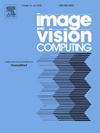CFENet: Context-aware Feature Enhancement Network for efficient few-shot object counting
IF 4.2
3区 计算机科学
Q2 COMPUTER SCIENCE, ARTIFICIAL INTELLIGENCE
引用次数: 0
Abstract
Few-shot object counting (FSOC) is designed to estimate the number of objects in any category given a query image and several bounding boxes. Existing methods usually ignore shape information when extracting the appearance of exemplars from query images, resulting in reduced object localization accuracy and count estimates. Meanwhile, these methods also utilize a fixed inner product or convolution for similarity matching, which may introduce background interference and limit the matching of objects with significant intra-class differences. To address the above challenges, we propose a Context-aware Feature Enhancement Network (CFENet) for FSOC. Specifically, our network comprises three main modules: Hierarchical Perception Joint Enhancement Module (HPJEM), Learnable Similarity Matcher (LSM), and Feature Fusion Module (FFM). Firstly, HPJEM performs feature enhancement on the scale transformations of query images and the shapes of exemplars, improving the network’s ability to recognize dense objects. Secondly, LSM utilizes learnable dilated convolutions and linear layers to expand the similarity metric of a fixed inner product, obtaining similarity maps. Then convolution with a given kernel is performed on the similarity maps to get the weighted features. Finally, FFM further fuses weighted features with multi-scale features obtained by HPJEM. We conduct extensive experiments on the specialized few-shot dataset FSC-147 and the subsets Val-COCO and Test-COCO of the COCO dataset. Experimental results validate the effectiveness of our method and show competitive performance. To further verify the generalization of CFENet, we also conduct experiments on the car dataset CARPK.
求助全文
约1分钟内获得全文
求助全文
来源期刊

Image and Vision Computing
工程技术-工程:电子与电气
CiteScore
8.50
自引率
8.50%
发文量
143
审稿时长
7.8 months
期刊介绍:
Image and Vision Computing has as a primary aim the provision of an effective medium of interchange for the results of high quality theoretical and applied research fundamental to all aspects of image interpretation and computer vision. The journal publishes work that proposes new image interpretation and computer vision methodology or addresses the application of such methods to real world scenes. It seeks to strengthen a deeper understanding in the discipline by encouraging the quantitative comparison and performance evaluation of the proposed methodology. The coverage includes: image interpretation, scene modelling, object recognition and tracking, shape analysis, monitoring and surveillance, active vision and robotic systems, SLAM, biologically-inspired computer vision, motion analysis, stereo vision, document image understanding, character and handwritten text recognition, face and gesture recognition, biometrics, vision-based human-computer interaction, human activity and behavior understanding, data fusion from multiple sensor inputs, image databases.
 求助内容:
求助内容: 应助结果提醒方式:
应助结果提醒方式:


